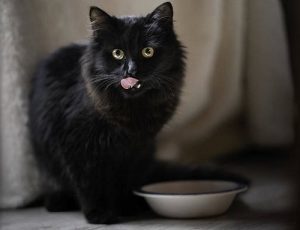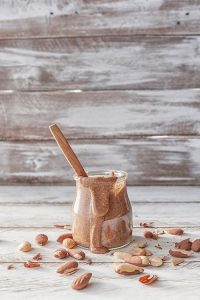Can Cats Eat Banana Pudding? Find out the truth before feeding this tempting dessert to your furry companion.
Cats, with their unique physiology and dietary requirements, require careful consideration when it comes to their food choices. While it’s tempting to share sweet treats like banana pudding with felines, everyone must understand the risks involved. Can Cats Eat Banana Pudding? Scroll to know more!
Can Cats Eat Bananas? Find out here
What is Banana Pudding?
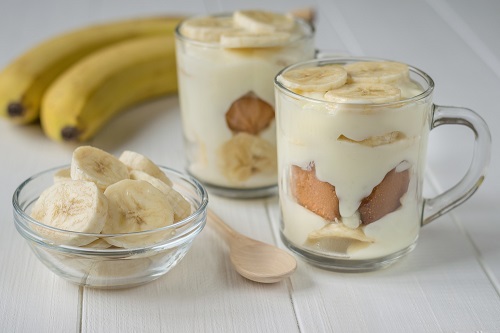
Banana pudding, a classic and traditional dessert that originated in the southern region of the United States, is a delightful culinary creation that brings together a pleasant combination of ingredients. This beloved treat showcases the thorough layering of perfectly sliced ripe bananas, velvety vanilla pudding or custard, and a rich and tempting topping of whipped cream or airy meringue. With its serving temperature leaning towards the cooler side, banana pudding offers a welcome respite from the scorching heat, making it an especially refreshing delicacy, particularly during the hot and humid days of summer. It is a popular dessert at picnics, potlucks, and family gatherings. However, when it comes to sharing human food with our furry friends, it is essential to consider their specific dietary needs.
Can Cats Eat Banana Pudding?
When it comes to sharing food with our furry friends, it is crucial to be mindful of what is safe for them. While certain human foods can be enjoyed by cats in moderation, it is important to exercise caution and avoid potential dangers. Can Cats Eat Banana Pudding? This tempting dessert is not recommended for our feline companions.
The primary concern lies in the ingredients used to prepare the pudding, which may contain substances that are harmful or even toxic to cats.
However, it is worth noting that bananas themselves are generally safe for feline consumption. Therefore, if you want to treat your cat to the taste of bananas, it is best to offer them plain, ripe banana slices as a safer and healthier alternative.
Is Banana Pudding Toxic For Cats?
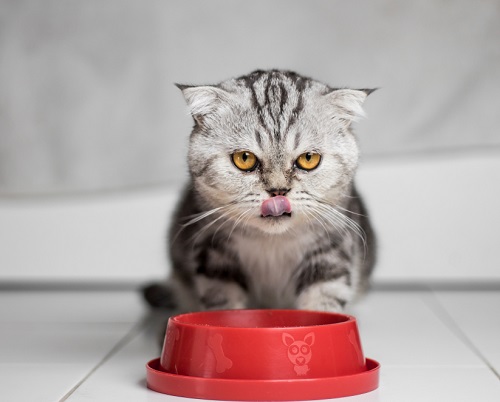
\While banana pudding is not inherently toxic to cats, it is not considered an optimal food choice for them. The inclusion of ingredients commonly found in banana pudding, such as sugar and dairy, goes against the natural feline diet and can lead to digestive disturbances or other potential health complications.
The Nutritional Needs Of Cats
Cats have specific nutritional needs that differ from those of humans and other animals. As obligate carnivores, they have evolved to thrive on a diet primarily consisting of animal-based protein. On the other hand, banana pudding contains several ingredients which are not easily processed by the feline gut, like carbohydrates.
Note: Some key nutritional needs of felines include proteins, fats, and taurine.
Importance Of A Balanced Diet For Cats
- Nutritional requirements: Cats have specific dietary needs that are different from other animals. They require higher levels of protein, essential amino acids (such as taurine), certain vitamins (like vitamin A), and minerals (like calcium and phosphorus). A balanced diet ensures that these nutritional needs are adequately met.
- Protein-rich diet: Cats are designed to thrive on a diet rich in animal protein. Protein is crucial for maintaining lean muscle mass, supporting healthy skin and coat, and supporting the overall immune system of cats.
- Taurine requirements: Taurine is an essential amino acid for cats that must be obtained through their diet. It plays a vital role in various physiological functions, including proper heart function, vision, and reproductive health. A lack of taurine can lead to severe health problems in cats.
- Water intake: Cats have a low thirst drive and are prone to dehydration. A diet that includes moisture-rich foods, such as wet or raw food, helps ensure adequate hydration, which is essential for kidney health and overall well-being.
- Avoiding fillers and artificial additives: Many commercial pet foods contain fillers, such as grains and carbohydrates, which are not necessary for a cat’s diet. Additionally, artificial additives, preservatives, and artificial colors may have negative effects on a cat’s health. Opting for high-quality, natural cat foods minimizes the inclusion of such ingredients.
- Weight management: A balanced diet helps maintain an optimal body weight for cats. Obesity in cats can lead to a range of health issues, including joint problems and a poor life quality. Proper nutrition is crucial for weight management and overall health.
- Prevention of urinary tract issues: Cats are prone to developing urinary tract issues, such as urinary crystals or bladder stones. A balanced diet that promotes proper hydration and includes appropriate mineral levels can help prevent such issues.
It is important to consult with a veterinarian to determine the best diet for your specific cat, taking into consideration their age, health conditions, and individual needs.
Risks of Feeding Banana Pudding To Cats
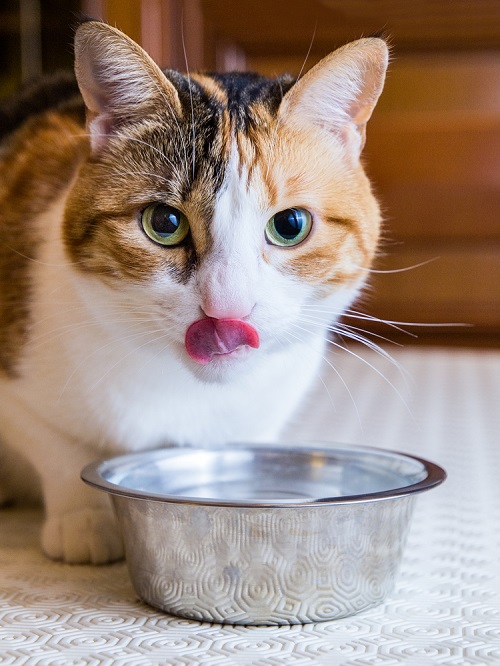
The consumption of banana pudding by cats can result in various concerns related to their well-being.
- Digestive Upset: Cats have sensitive digestive systems, that may react negatively to ingredients commonly found in banana pudding, including sugar, dairy, and cookies. These ingredients have the potential to cause gastrointestinal distress, leading to symptoms such as upset stomachs or vomiting.
- Nutritional Imbalance: The nutritional balance provided by banana pudding may not align with the specific dietary requirements of felines. While bananas may provide some nutritional value, the overall composition of banana pudding does not meet the essential nutritional needs of cats.
- Potential Allergies: There is a possibility of allergic reactions among certain cats due to specific ingredients present in banana pudding, such as dairy or wheat commonly found in cookies. Allergies can manifest through various symptoms, including skin irritations, itching, or gastrointestinal disturbances.
Considering these factors, it is advisable to prioritize a feline’s health by offering them a diet that adheres to their unique nutritional needs and avoids potential allergens or ingredients that may lead to digestive discomfort.
Ingredients That Can Harm Cats
It is crucial to be aware of certain ingredients commonly found in banana pudding that can be harmful to your feline companion:
- Chocolate: Many banana pudding recipes include chocolate in various forms such as cookies, syrup, or shavings. Chocolate contains theobromine, a substance that is toxic to cats.
- Nuts: Certain banana pudding recipes may incorporate nuts, such as pecans or walnuts, which can pose a problem for cats. Nuts are generally high in fats, and the high-fat content can lead to health problems in felines.
- Dairy Products: Dairy products such as milk, cream, or custard are commonly used in banana pudding, but many cats are lactose intolerant, lacking the necessary enzyme lactase to properly digest lactose. Feeding dairy to lactose-intolerant cats can result in digestive upset and discomfort.
- Excessive Sugar: The excessive sugar content in banana pudding, used to sweeten the dessert, can contribute to weight gain, obesity, and dental problems in cats.
Being mindful of these ingredients can help ensure the well-being of your feline companion and prevent potential health complications.
Options Other Than Banana Pudding
- Cat-Specific Treats: Choose commercially available cat treats that are specially formulated to meet feline nutritional needs. Look for treats made from high-quality ingredients and approved by reputable pet food brands, offering a variety of flavors and textures.
- Plain Cooked Meat: Cats are carnivores, so small amounts of plain cooked meat can be a nutritious treat. Opt for lean meats like chicken, turkey, or fish without seasoning, bones, or skin. Ensure the meat is fully cooked and cooled before offering it to your cat.
- Freeze-Dried Meat Treats: Freeze-dried meat treats are popular among felines. These treats retain the nutritional value of the meat while removing moisture. They come in bite-sized pieces and are available in various protein options such as chicken, beef, or fish.
- Catnip or Cat Grass: Some cats enjoy the taste and scent of catnip. Offer it as a treat or sprinkle it on a toy for your cat to interact with. Additionally, providing cat grass can be a safe and beneficial way for felines to satisfy their urge to chew on greens and aid digestion.
- Homemade Cat Treats: If you enjoy baking, try making homemade cat treats using cat-friendly recipes. Many online resources provide recipes that incorporate cat-safe ingredients like canned tuna and chicken broth (without onion or garlic).
Remember to introduce new treats gradually and in moderation to ensure your cat’s digestive system tolerates them well. Monitor your pet for any signs of allergies or sensitivities to specific ingredients. It is always a good idea to consult with a vet for personalized recommendations based on the cat’s dietary needs and health condition.
My Cat Ate Banana Pudding. What To Do?
If your cat has ingested a small quantity of banana pudding, there is typically no immediate cause for alarm, but it is important to take appropriate action. Here are a few steps you can take:
- Assess the situation: Begin by evaluating the amount of banana pudding your cat consumed. If it was just a small taste, the chances of any adverse effects are minimal.
- Observe your cat: It is essential to closely monitor your cat for any signs of discomfort or digestive disturbances over the next few hours. Look out for symptoms such as vomiting, diarrhea, or a decreased appetite, as these could indicate an adverse reaction.
- Ensure access to water: To support your cat’s well-being, provide it with fresh water to drink. This will help dilute the pudding and keep your cat hydrated.
- Avoid giving additional human food: While a small amount of banana pudding may not be harmful, it is best to avoid offering any more human food to your cat. Stick to its regular balanced diet to prevent any potential digestive issues.
- Consult a veterinarian: In situations where your cat exhibits concerning symptoms or if you are uncertain about the amount of pudding ingested, it is wise to seek guidance from your veterinarian. They will be able to provide personalized advice based on your cat’s medical history and the specific circumstances.
Remember, the best approach is prevention. Take proactive measures to keep potentially harmful human foods out of your cat’s reach to prevent accidental ingestion in the future and ensure their well-being.
Sign of Allergies
While cats can have food allergies, it is relatively uncommon for them to be allergic to bananas or banana pudding specifically. However, if you suspect that your cat may be allergic to banana pudding or any of its ingredients, here are some potential signs to watch out for:
- Digestive issues: Vomiting, diarrhea, or frequent bowel movements can indicate an adverse reaction to the food.
- Skin problems: Itching, redness, inflammation, or rashes on the skin are common signs of allergies in cats.
- Excessive scratching: If your cat is constantly scratching, biting, or licking certain areas of their body, it could be a sign of an allergic reaction.
- Respiratory symptoms: Cats with food allergies may experience sneezing, coughing, wheezing, or difficulty breathing.
- Swelling: Facial swelling, particularly around the mouth, lips, or eyes, can occur as a result of an allergic reaction.
How To Prevent Cats From Eating Banana Pudding?
- Store securely: Keep all food items, including banana pudding, in securely sealed containers or covered dishes. Make sure they are stored in cabinets, pantries, or refrigerators that are inaccessible to your cat. Consider using childproof locks if needed.
- Elevated storage: Store food items on high shelves or in upper cabinets that your cat cannot reach or jump onto. Cats are excellent climbers, so choose storage areas that are out of their reach.
- Monitor countertops: Be vigilant when preparing or serving food on countertops. Cats are agile and may attempt to snatch food when your back is turned. Keep an eye on your pet and discourage any attempts to jump onto countertops.
- Secure trash cans: Use trash cans with tight-fitting lids or keep them in a cabinet with a childproof lock. This will prevent your cat from rummaging through the trash and accessing discarded food items, including banana pudding.
- Clear leftovers promptly: After enjoying banana pudding or any other human food, promptly clear away leftovers and wash dishes. Leaving food unattended can attract your cat’s curiosity and increase the risk of ingestion.
- Educate family members and guests: Make sure everyone in your household is aware of the importance of keeping human food out of the cat’s reach. Inform guests not to feed your cat any table scraps or desserts, including banana pudding.
- Provide appropriate alternatives: To satisfy your cat’s desire for treats, offer them cat-friendly alternatives, such as commercial cat treats or specially formulated cat desserts.
Can Cats Eat Banana Pudding? Quick Takeaways!
- Banana pudding is a dessert made of sliced bananas, vanilla pudding or custard, and whipped cream or meringue.
- Cats should not eat banana pudding due to their different nutritional needs.
- While not toxic, banana pudding contains ingredients that can cause digestive issues and nutritional imbalances in felines.
- Cats have specific dietary requirements, including proteins and fats, which are not adequately met by banana pudding.
- A balanced and species-appropriate diet is essential for cats to meet their unique nutritional requirements, including high protein content, essential amino acids like taurine, adequate hydration, and avoiding fillers or artificial additives, to promote overall health and prevent various health issues.
- Feeding banana pudding to kitties can lead to digestive upset and potential allergies.
- Options other than banana pudding include cat-specific treats, fresh or frozen meat, catnip, and homemade cat treats.
- If you cat has consumed banana pudding, assess the situation, observe, ensure access to water, avoid feeding more human food, and contact a doctor.
- Sign of allergies include digestive, skin, and respiratory problems.
- Prevent cats from eating banana pudding by securely storing it in sealed containers, placing it out of reach, monitoring countertops, securing trash cans, clearing leftovers promptly, educating household members and guests, and providing cat-friendly alternatives

